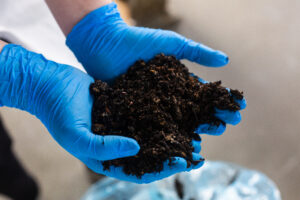Biostimulants – the nexus of biotechnology and fertilizer
As we look forward to welcoming some of the leading thinkers in bio-based chemical and agricultural innovation at Cleantech Forum Europe in Antwerp on May 14-16, we thought we would take a look at one leading technology that is set to have an impact in the agriculture & food industry – biostimulants.
What are Biostimulants?
It has taken some time to identify biostimulants as its own market. An article from 2015 highlights the difficulty of defining a biostimulant as opposed to a fertilizer, but it did come to consensus on the following definition:
“A plant biostimulant is any substance or microorganism applied to plants with the aim to enhance nutrition” – Patrick du Jardin, 2015
Since then, much greater clarity has been brought to the biostimulants market as the US FDA has included a definition for plant biostimulants in the current draft of the Farm Bill, using the following definition:
“[A] substance or micro-organism that, when applied to seeds, plants, or the rhizosphere, stimulates natural processes to enhance or benefit nutrient uptake, nutrient efficiency, tolerance to abiotic stress, or crop quality and yield.” – H.R. 2, Agriculture and Nutrition Act of 2018
“The inclusion of a definition for plant biostimulants in the Farm Bill represents a critical initial step in the legislative process that will ultimately support the development of new sustainable technologies for agriculture and U.S. farmers,” said David Beaudreau, Executive Director of the U.S. Biostimulant Coalition (USBC).
That sounds a lot like fertilizer?
According to the European Biostimulants Industry Council (EBIC), biostimulants distinguish themselves from traditional crop inputs in two main ways, and are therefore complementary to crop nutrition and crop protection:
- Biostimulants operate through different mechanisms than fertilizers, regardless of the presence of nutrients in the products.
- They differ from crop protection products because they act only on the plant’s vigor and do not have any direct actions against pests or disease.
There are many processes and products that can be counted under the biostimulant umbrella. As the diagram below shows, the spectrum is wide enough to include humic substances (the result of biodegradation of dead organic matter), microbes and fungi, proteins, and seaweed. Currently, humic and fulvic acids constitute more than half of the biostimulant market, with seaweed extracts being secondary. Microbial extracts, plant extracts, vitamin B, chitin and chitosan round out the market offerings, according to the 2nd World Congress on the use of Biostimulants in Agriculture.

Market Size & Innovation

These are promising signs for a market that is expected to near double by 2021. According to various estimates, the current market size of $1.8 billion is projected to reach $2.9 billion by 2021, or to grow to over $2.5 billion.
So who are the front runners for capturing the growing value of this industry? Looking beyond the agricultural industry giants, there are a number of startups that we believe are well placed with interesting solutions.
Asilomar Bio, a San Francisco-based maker of chemical crop inputs, has raised a $12.25 million Series B Round to bring its first chemical yield enhancement product to market.
Aphea.Bio is a Belgian developer of sustainable agricultural products using natural microorganisms to increase crop yields and improve protection against fungal diseases. The company is participating on our Food, Feed and Agriculture: It’s All About Chemistry panel at Cleantech Forum Europe.
Micropep Technologies is a Massachusetts-based developer of a non-GMO generation of bio-herbicides and biostimulants. The company just announced a funding round in March to help develop its products. The near $5 million round included participation from Sofinnova Partners.
Three-year-old Growcentia out of Fort Collins, Colorado is a developer of a microbial biostimulant that naturally elevates phosphorus and micronutrient availability to support plant growth.
FYTEKO, a Brussels-based developer of biostimulants that enable plants to resist better to biotic and abiotic stress, is also participating on our Food, Feed and Agriculture: It’s All About Chemistry panel at Cleantech Forum Europe.
Again, you can learn more about the latest innovations in the bio-chemical sector during our Sustainable Chemistry track at the upcoming Cleantech Forum Europe!


